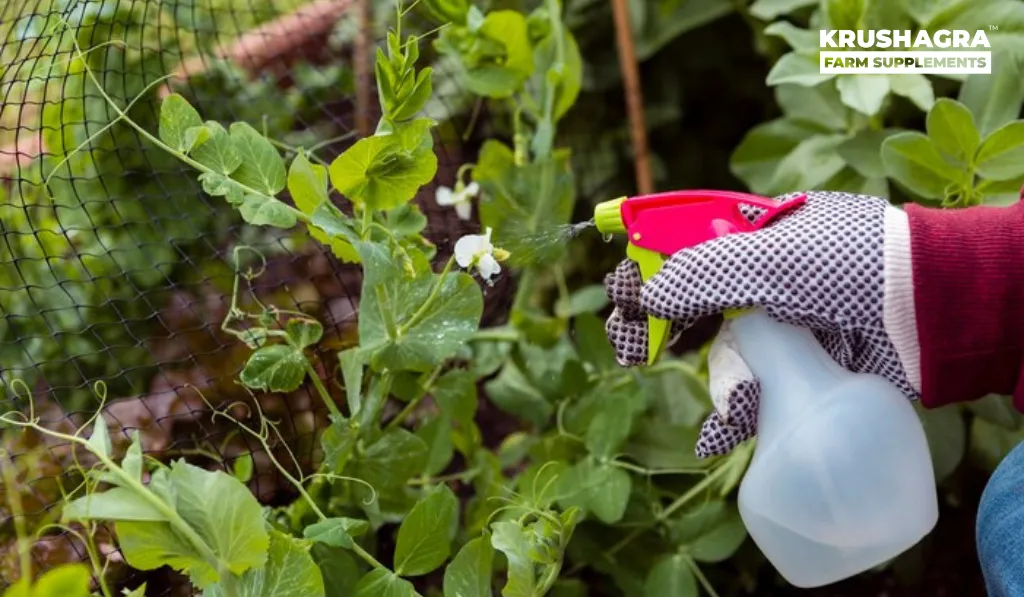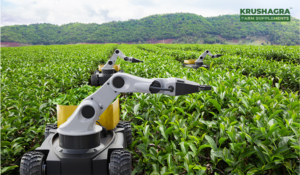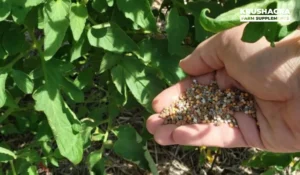Introduction:
In the quest for sustainable and eco-friendly agricultural practices, biofertilizers and biopesticides have emerged as valuable alternatives to conventional chemical inputs. These biological agents leverage the power of living organisms to enhance soil fertility and combat pests, offering a range of advantages that extend beyond the boundaries of traditional farming. In this comprehensive blog, we will delve into the world of biofertilizers and biopesticides, exploring their advantages and understanding the differences that set them apart.
Biofertilizers:
Definition and Types of Biofertilizers:
Biofertilizers are living microorganisms that enrich the soil by promoting nutrient availability and enhancing plant growth. There are various types of biofertilizers, each harboring specific strains of beneficial bacteria, fungi, or other microorganisms.
- Nitrogen-Fixing Biofertilizers:
Azotobacter and Rhizobium bacteria are prominent examples that convert atmospheric nitrogen into a plant-usable form, fostering increased nitrogen content in the soil.
- Azotobacter and Rhizobium Bacteria:
Nitrogen Fixation Efficiency: These bacteria have the unique ability to convert atmospheric nitrogen into ammonia, a form usable by plants, promoting nitrogen availability in the soil.
- Symbiotic Relationships: Rhizobium forms symbiotic relationships with leguminous plants, forming nodules on roots to fix nitrogen, enhancing plant growth.
- Phosphorus-Solubilizing Biofertilizers:
Mycorrhizal fungi and phosphate-solubilizing bacteria help release bound phosphorus, making it more accessible to plants.
- Mycorrhizal Fungi’s Role:
Mycorrhizal fungi establish a mutualistic association with plant roots, increasing the surface area for nutrient absorption and aiding in the solubilization of phosphorus.
- Phosphate-Solubilizing Bacteria: These bacteria release phosphorus from insoluble compounds, improving the nutrient status of the soil.
- Potassium-Releasing Biofertilizers:
Potash-mobilizing bacteria facilitate the release of potassium from soil minerals, aiding in plant nutrient uptake.
- Role of Potash-Mobilizing Bacteria: Potash-mobilizing bacteria play a crucial role in releasing potassium from minerals, supporting plant functions like enzyme activation, water uptake, and photosynthesis.
- Stress Tolerance: Improved potassium availability enhances plant stress tolerance, crucial for withstanding adverse environmental conditions.
Advantages of Biofertilizers:
- Sustainable Nitrogen Fixation:
Nitrogen-fixing biofertilizers reduce reliance on synthetic nitrogen fertilizers, contributing to sustainable agriculture and mitigating environmental concerns associated with nitrogen runoff.
- Enhanced Soil Structure:
Biofertilizers improve soil structure by promoting the growth of beneficial microorganisms, increasing organic matter content, and reducing soil compaction.
- Cost-Effective:
While initial costs may be comparable to chemical fertilizers, the long-term benefits of improved soil fertility and reduced dependence on external inputs make biofertilizers cost-effective in the agricultural context.
- Non-Toxic and Environmentally Friendly:
Biofertilizers pose minimal risks to human health and the environment compared to chemical fertilizers, as they do not introduce harmful residues into the soil or water.
Unique Aspects of Biofertilizers:
Microbial Diversity:
- Microbial Consortia: Biofertilizers often contain diverse microbial consortia, creating a balanced and resilient soil microbiome.
- Synergistic Effects: The interactions among different microbial species contribute to a more robust and adaptable soil ecosystem.
Plant Growth-Promoting Substances:
- Auxins and Cytokinins: Some biofertilizers produce plant growth-promoting substances like auxins and cytokinins, stimulating root and shoot development.
- Bio-Stimulatory Effects: These substances contribute to increased nutrient uptake, improving overall plant health.
Biopesticides:
Definition and Types of Biopesticides:
Biopesticides are naturally occurring substances derived from living organisms or their byproducts, serving as an eco-friendly alternative to chemical pesticides. There are three main categories of biopesticides:
- Microbial Biopesticides:
Bacteria, fungi, and viruses that target specific pests, such as Bacillus thuringiensis (Bt) for insect control.
- Target Specificity: Bt produces toxins lethal to specific insect pests, ensuring minimal impact on non-target organisms.
- Fungal Pathogenicity: Beauveria bassiana is a naturally occurring fungus that infects and kills various insect pests.
- Plant-Incorporated Protectants (PIPs):
Genetically modified crops that express proteins toxic to specific pests, offering built-in resistance.
- Transgenic Crops Advantages: PIPs, or transgenic crops, are engineered to express proteins that confer resistance against specific pests.
- Reduced Environmental Impact: By incorporating resistance into the plant, the need for external pesticide applications is diminished, reducing environmental contamination.
- Biochemical Biopesticides:
Naturally occurring substances, such as neem oil or insect pheromones, disrupt pest behavior and physiology.
- Neem Oil: A Multifaceted Solution: Neem oil acts as a repellent, antifeedant, and disruptor of insect growth, providing a multifaceted approach to pest control.
- Pheromones and Behavior Modification: Biochemicals like insect pheromones disrupt mating patterns and insect behavior, offering a non-lethal but effective control strategy.
Advantages of Biopesticides:
- Targeted Pest Control:
Biopesticides exhibit specificity in their action, targeting particular pests while leaving beneficial organisms unharmed. This targeted approach minimizes the ecological impact on non-target species.
- Reduced Residue Levels:
Biopesticides often degrade faster than chemical pesticides, resulting in lower residue levels in crops and the environment.
- Resistance Management:
The risk of pests developing resistance to biopesticides is generally lower compared to chemical pesticides, providing a more sustainable solution for pest management.
- Minimal Harm to Non-Target Organisms:
Biopesticides are generally safer for beneficial insects, birds, and other organisms in the ecosystem, preserving biodiversity.
Unique Aspects of Biopesticides:
Ecological Compatibility:
- Biodiversity Preservation: Biopesticides are often more selective, preserving beneficial insects, birds, and other non-target organisms.
- Integrated Pest Management (IPM): Biopesticides are integral to IPM strategies, promoting a holistic approach to pest control.
Rapid Degradation:
Environmental Fate: Biopesticides tend to degrade more rapidly than chemical pesticides, minimizing their persistence in the environment.
Low Residue Levels: Faster degradation results in lower residue levels in crops, contributing to safer food products.
Differences Between Biofertilizers and Biopesticides:
While both biofertilizers and biopesticides contribute to sustainable agriculture, they serve distinct purposes and operate through different mechanisms.
Purpose:
- Biofertilizers enhance soil fertility and nutrient content, promoting plant growth and overall soil health.
- Biopesticides target and control pests, preventing crop damage and reducing the need for chemical pesticides.
Composition:
- Biofertilizers consist of beneficial microorganisms like bacteria, fungi, and algae.
- Biopesticides can be microbial (bacteria, fungi, viruses), plant-incorporated (genetically modified crops), or biochemical (natural substances).
Action Mechanism:
- Biofertilizers enhance nutrient availability through nitrogen fixation, phosphorus solubilization, or potassium release.
- Biopesticides disrupt pest physiology, behavior, or serve as toxic agents against specific pests.
Conclusion:
Biofertilizers and biopesticides, with their unique features and mechanisms, offer innovative solutions for sustainable agriculture. The intricate roles of specific microorganisms in biofertilizers and the targeted action of biopesticides highlight their potential to revolutionize farming practices. By harnessing the power of nature, these biological solutions not only enhance agricultural productivity but also contribute to environmental conservation and the creation of resilient ecosystems. As we continue to unravel the complexities of these biological tools, their adoption holds the promise of a greener, more sustainable future for global agriculture.






